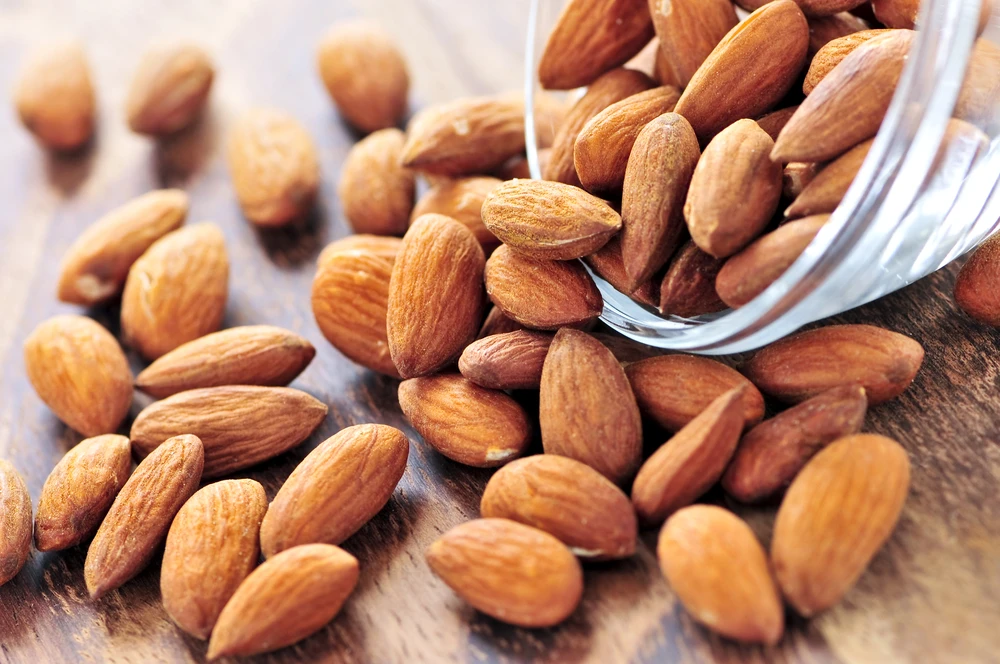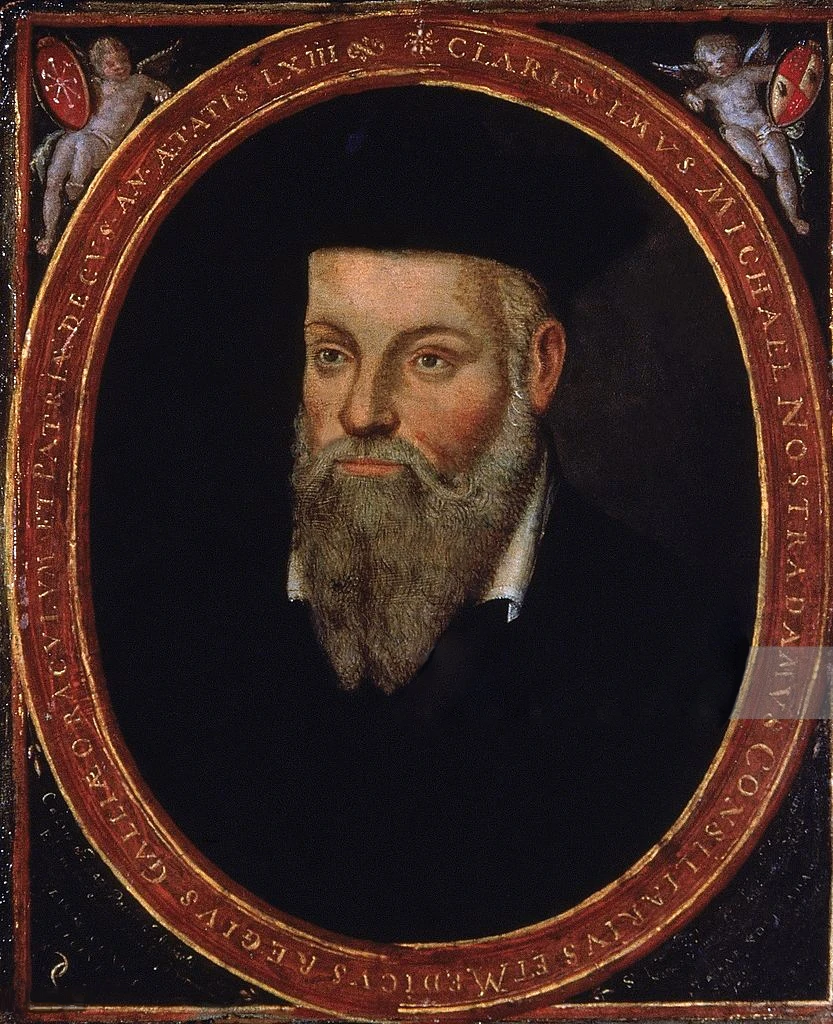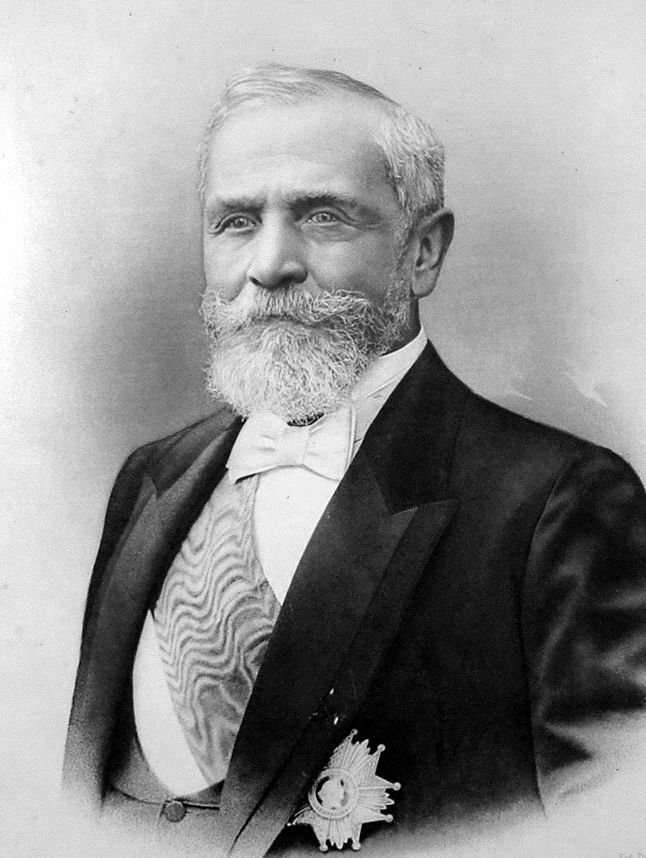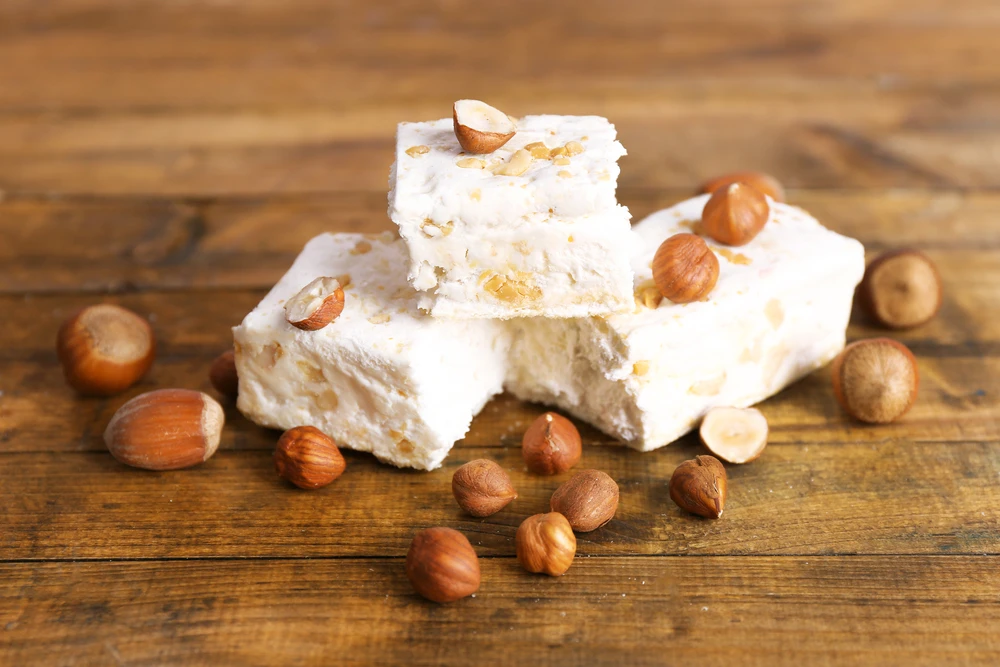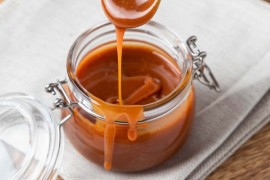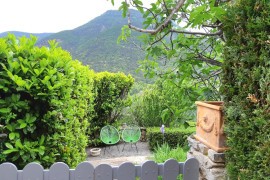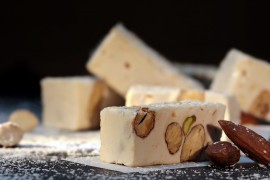A brief history of Nougat
He arrived from the East
The first trace of a recipe for nougat is Arabic. Books in Baghdad refer to it as "native" as early as the 10th century. It is thought to have been invented in Harran (now in Turkey) and Aleppo (now in Syria). It was also invented in Uzbekistan at the same time. It is mentioned in Spain in the 13th century, and in Catalonia it is called "torron". In France, pinyonat is mentioned in Montauban. Nostradamus, the famous astrologer, gave a recipe for nougat in 1555 and explained that his recipe came from Italy.
Almonds are essential for making nougat. Photo chosen by monsieurdefrance.com: elenathewise via dépositphotos.com
And France has made this one of its great specialities
Nogat", from the old Provençal word "nogat" meaning "nut", was first used in Provence in 1595. Almonds have been grown here since the 14th century, and you need them to make nougat. The funny thing is that this sweet has long been regarded as a kind of medicine , since it contains sugar and sugar is thought to heal. In fact, it was first mentioned in France in the 16th century in a book... Of pharmacy. It is also found in "le Thrésor de Santé", a dietetic book dating from 1607. In the 17th century, it was already a speciality of Provence and Languedoc, and was tasted by Louis XIV's grandson, the Duke of Burgundy, who discovered it in Montélimar (there was already talk of Nougat de Montélimar in 1701) and took almost 40 kg of it with him on his way to Versailles. The word "nougat" became established in the 19th century.
Nostradamus (1503-1566) gave several sweet recipes because he was an apothecary (pharmacist) and sugar was also used to treat illnesses. There's a recipe for nougat by him, and quite a few recipes in his treatise... on making jam.
Thank you, Mr President
The President of the Republic, Emile Loubet (1838-1929), a fan of nougat
Emile Loubet (1838-1929), President of the Republic and... Former mayor of Montélimar! So of course nougat... He ate a lot of it, and gave some to his guests at the Elysée Palace. He even gave some to foreign heads of state. Paid holidays and the famous Nationale 7 (the road linking Paris and the south coast) made Montélimar nougat very popular in France. There are now 12 nougat makers in Montélimar, producing around 4,500 tonnes of nougat a year.
Our recipe for white nougat.
There are several types of nougat. The best known is white nougat, but there is also dark nougat (with chocolate) and pistachio or even praline nougat. Discover our recipe for white nougat here.
Ingredients:
- 250 g honey (accacia or orange)
- 200 grams of almonds
- 200 grams caster sugar
- 120 grams glucose syrup
- 100 grams of hazelnuts
- 50 grams pistachios (mostly unsalted!)
- 50 grams of walnuts
- 65 grams of water
- 2 egg whites (about 50 or 60 grams)
- 1 pinch of salt
- Sheets of unleavened paper (or baking parchment).
The process:
Pastry-making is precise, so weigh your ingredients before you start
Make sure you have a thermometer with you, as you will need to cook precisely.
- Separate your egg whites from the yolks
- Line your baking tin with the sheets of unleavened baking paper.
- Place your dried fruit on a baking tray in the oven to roast for 15 minutes at 140°C (gas mark 2). Leave them in the oven afterwards, as they will soon be ready to serve.
- In saucepan 1, place the honey and heat to 125 degrees (your thermometer should allow you to check). Set aside.
- In saucepan 2, mix the 200 grams of sugar, the 120 grams of glucose syrup and the water.
- Bring to the boil up to 140 degrees (144 maximum, your thermometer should allow you to check).
- In a bowl, whisk your eggs until stiff with a small pinch of salt.
- Return the pan 1 of sugar to the heat and raise the temperature to 145 degrees.
- Still in saucepan 1, add the hot honey from saucepan 2 to the sugar/glucose, stirring and heating to 150°C (to know the temperature, do not let your stopwatch touch the bottom of the saucepan, it should only touch the mixture).
- Take the bowl of egg whites
- Gently pour in the sugar/glucose/honey mixture in a thin stream (so as not to break the egg whites) and continue to whisk the egg whites, which will increase in volume.
- The mixture is good when it's creamy.
- Stir in the dried fruit left in the oven (almonds, hazelnuts, pistachios, walnuts) and mix quickly with a wooden spoon.
- Pour the mixture into the tin lined with baking paper.
- Level the surface
- Place another sheet of unleavened paper on top.
- Leave to cool in the kitchen for 4 hours
- Then chill in the fridge (overnight is best).

